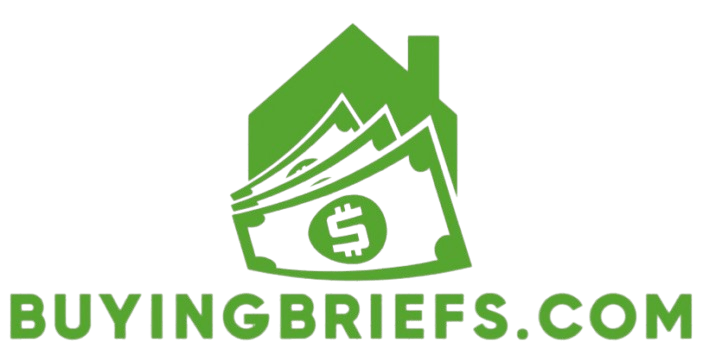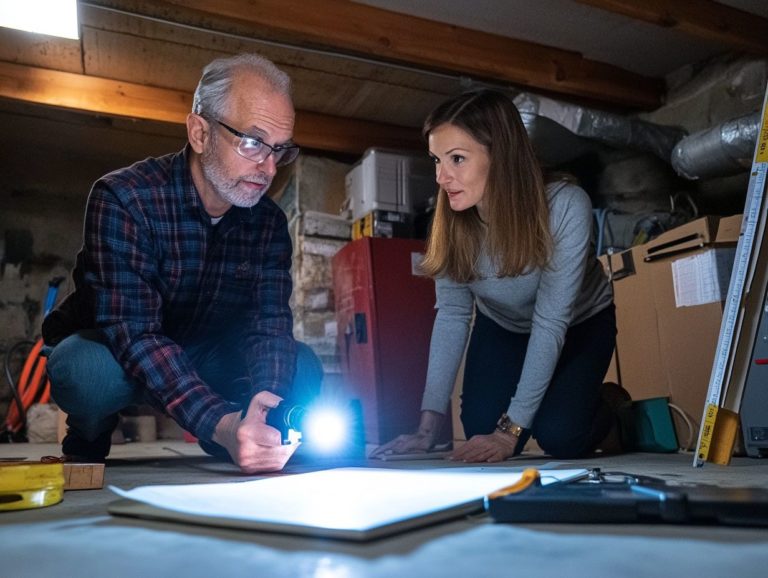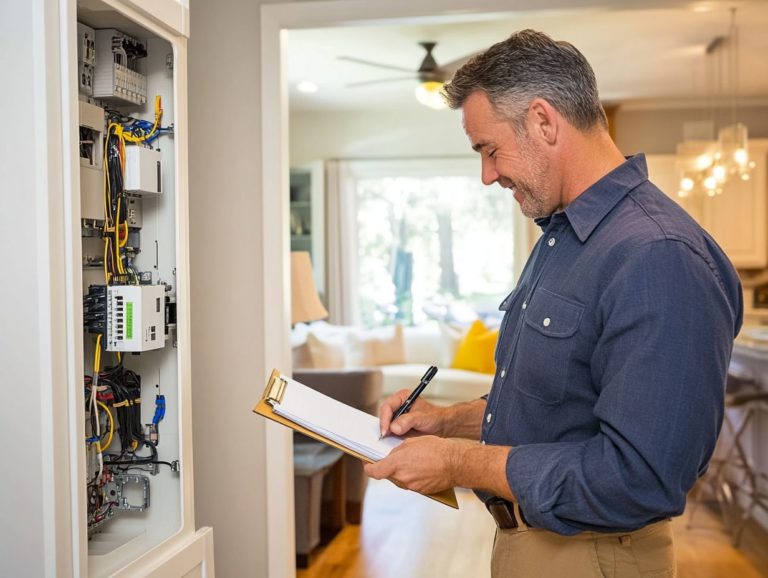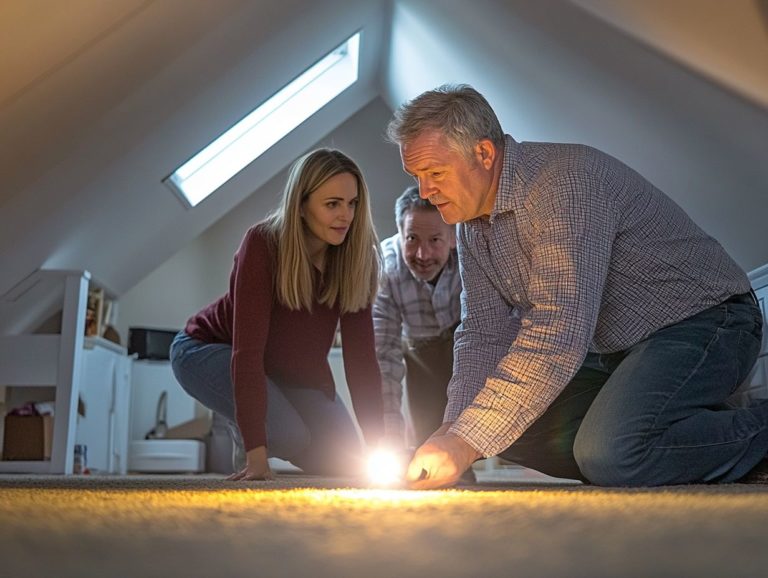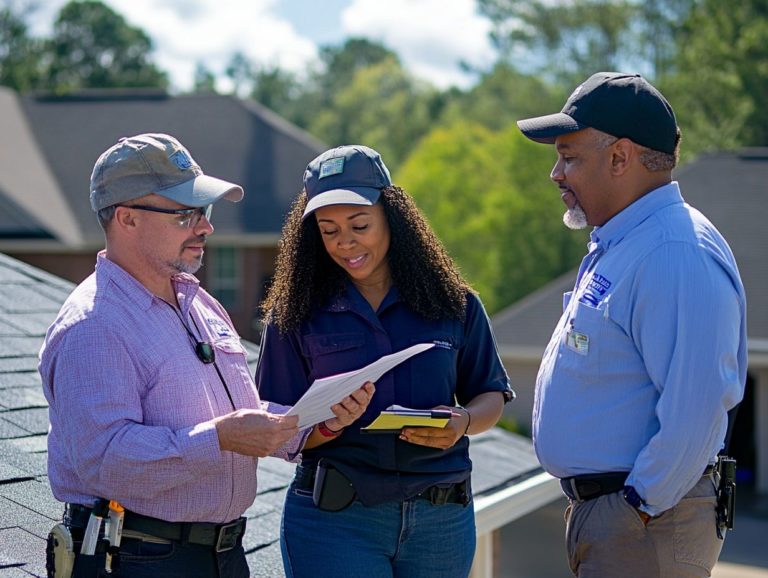The Importance of Thermal Imaging in Inspections
Are you aware that invisible issues in your home could be costing you money? In today s fast-paced world, effective inspections are essential for ensuring safety, efficiency, and cost-effectiveness across various industries.
Thermal imaging emerges as a powerful tool in this realm, uncovering hidden issues that traditional methods often overlook. Whether it s identifying energy loss, detecting moisture problems, or pinpointing electrical faults, this technology boasts a range of applications that can significantly enhance your inspection processes.
This article delves into the benefits of thermal imaging, offers guidance on conducting effective inspections, and provides valuable tips for selecting a qualified inspector.
Explore how this innovative technique can revolutionize your inspection approach and ultimately save you money over time.
Contents
- Key Takeaways:
- Applications of Thermal Imaging in Inspections
- Benefits of Thermal Imaging in Inspections
- How to Conduct a Thermal Imaging Inspection
- Choosing a Qualified Thermal Imaging Inspector
- Frequently Asked Questions
- What is thermal imaging and how is it used in inspections?
- Why is thermal imaging important in inspections?
- In what types of inspections is thermal imaging commonly used?
- How does thermal imaging benefit property owners and buyers?
- Are there any limitations to thermal imaging in inspections?
- How can thermal imaging improve the efficiency of inspections?
Key Takeaways:
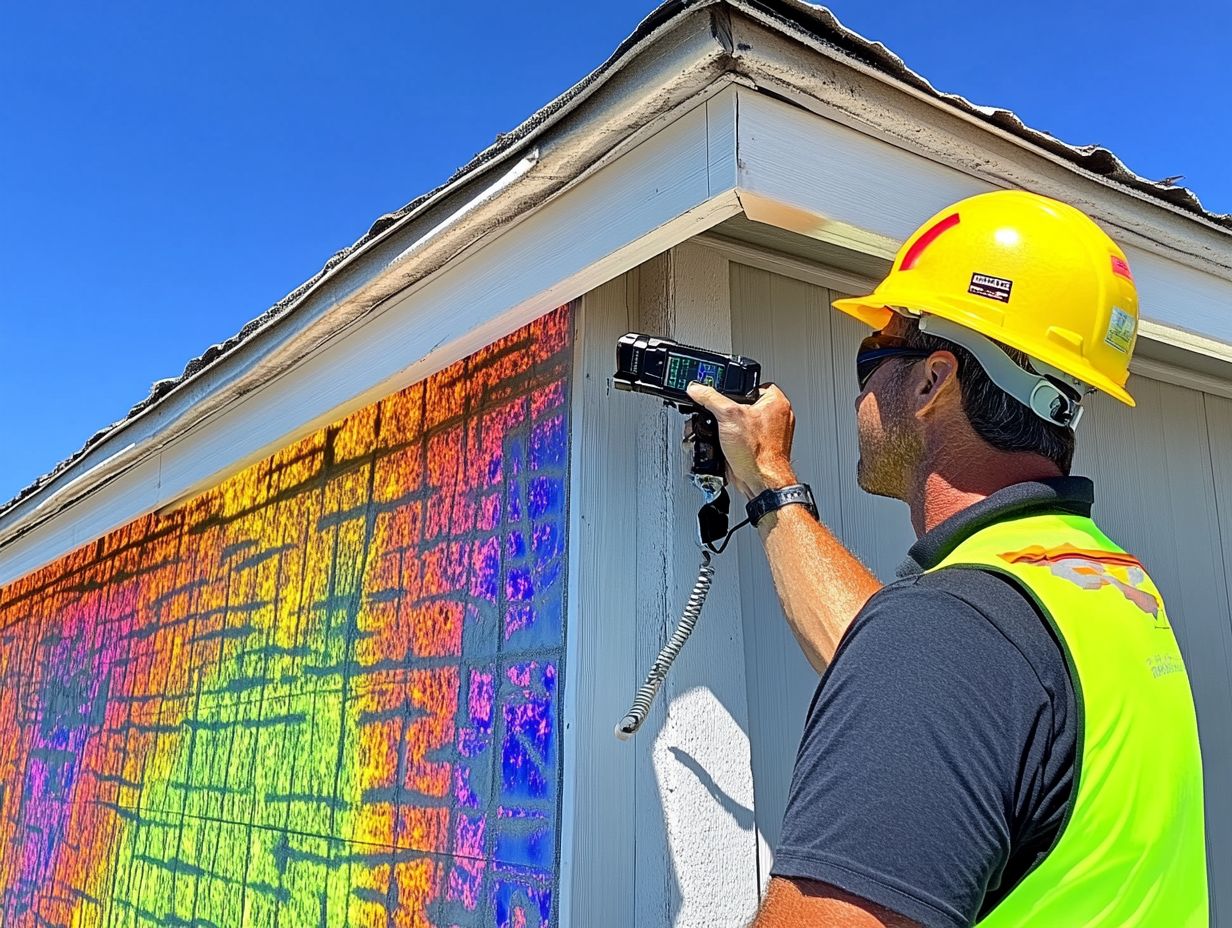
Thermal imaging can identify energy loss, moisture, mold, and electrical issues that are not visible to the naked eye, making it an essential tool in inspections.
The use of thermal imaging in inspections can improve accuracy and efficiency, leading to cost savings for property owners.
When conducting a thermal imaging inspection, it is important to use proper equipment and techniques. Choose a qualified inspector with the necessary training and experience.
What is Thermal Imaging?
Thermal imaging is a remarkable, non-invasive technology that uses infrared light to generate thermal images, uncovering temperature variations in structures. This cutting-edge technique is critical for home inspections, offering you insights into hidden issues like moisture problems, energy inefficiencies, and potential water leaks.
In regions like Georgia and South Carolina, certified inspectors harness this powerful tool to help you tackle problems before they escalate.
But thermal imaging isn t just limited to residential properties; it has a wide array of applications, including:
- Electrical inspections
- Mechanical assessments
- Building diagnostics
By identifying temperature differences, inspectors can highlight areas where energy is being wasted, ultimately bolstering energy efficiency and conservation.
This proactive methodology not only preserves the structural integrity of your home but also enhances your comfort and saves you money on utility bills.
When certified professionals utilize thermal imaging technology, they provide you with detailed analysis reports, empowering you to make well-informed decisions about your property.
Applications of Thermal Imaging in Inspections
Thermal imaging has transformed the landscape of home inspections, offering you detailed insights across a range of applications.
It allows for the identification of moisture issues, water leaks, and structural defects that might otherwise go unnoticed. Certified inspectors leverage infrared cameras to detect thermal signatures, uncovering hidden problems that ensure you receive a thorough and comprehensive inspection report.
Identifying Energy Loss and Inefficiencies
One of the most significant uses of thermal imaging in your home is pinpointing energy loss and inefficiencies, especially through your HVAC systems and insulation.
By employing infrared cameras, certified inspectors can uncover areas of thermal bridging and inadequate insulation that inflate your utility bills. This ultimately guides you toward enhanced energy efficiency.
This technology is significant, acting as a critical tool to reveal hidden issues that might elude traditional inspections. For example, leaks around windows, doors, or even ducts can severely compromise your home’s thermal envelope.
Tackling these problems not only boosts your comfort but also extends the lifespan of your HVAC systems by lightening their workload.
As a result, you can unlock substantial savings now! Ensuring proper insulation contributes to a healthier indoor environment. Thermal imaging, therefore, stands as an invaluable asset on your path to achieving a more energy-efficient household.
Contact a certified inspector today and start saving!
Detecting Moisture and Mold
Infrared cameras serve as a powerful tool for detecting moisture issues and potential mold growth within a property. These cameras detect heat differences to uncover hidden problems, revealing areas where trapped moisture exists. With infrared technology, you can pinpoint locations where foundation water might cause future complications, providing invaluable insights for both homeowners and inspectors.
This amazing technology allows for a non-invasive assessment of your space. It uncovers hidden leaks and damp spots that might otherwise remain unnoticed until significant damage occurs. Embracing infrared cameras gives you early warnings, empowering you to take timely action and prevent extensive structural damage and costly repairs. Don’t wait for problems to escalate detect issues early and save on repairs!
You can see how moisture moves and identify potential mold hotspots, encouraging a proactive approach to property maintenance. This protects your investment, safeguards your health, and enhances safety in your living environment.
Locating Electrical Issues
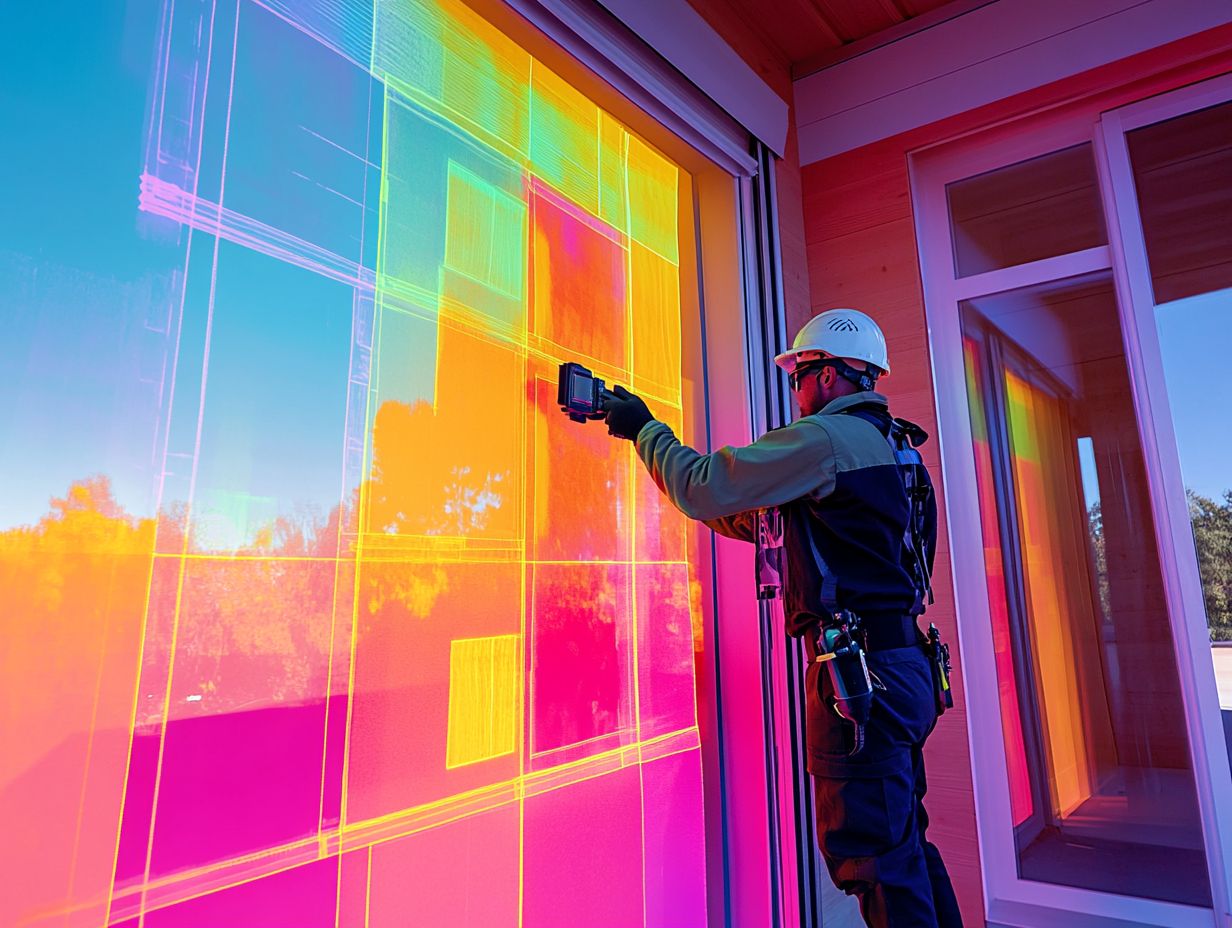
Locating electrical issues is a crucial application of infrared cameras, as they effectively identify electrical faults that may pose safety risks.
By revealing temperature anomalies in electrical systems, certified inspectors help you proactively address potential hazards that could lead to costly repairs or dangerous situations if left unchecked. Thermal imaging excels at detecting overheating circuits, loose connections, and overloaded components common culprits behind electrical malfunctions.
This non-invasive technology provides a straightforward solution for homeowners and businesses looking to enhance their safety protocols. Integrating infrared cameras into your routine home inspections prioritizes your safety and ensures the longevity of your electrical systems.
Understanding these thermal signatures allows for timely interventions, preventing electrical fires and reducing energy inefficiencies from faulty wiring or equipment.
Benefits of Thermal Imaging in Inspections
The benefits of infrared cameras in inspections are truly remarkable, offering you enhanced accuracy and efficiency in uncovering hidden issues.
By utilizing infrared cameras, certified inspectors can deliver a comprehensive inspection report that elevates the quality of the assessment. This proactive approach not only identifies potential problems early on but also translates into significant cost savings by addressing issues before they escalate.
Improved Accuracy and Efficiency
Thermal imaging boosts the accuracy and speed of inspections, allowing you to quickly pinpoint hidden issues that traditional methods might miss. This cutting-edge technology provides clear visuals that enhance the inspection report, giving you peace of mind about your property’s condition.
By detecting temperature variations invisible to the naked eye, inspectors can reveal problems like moisture intrusion, electrical hotspots, and insulation deficiencies. These valuable insights empower you to make more informed decisions regarding repairs, ultimately saving you both time and money.
Unlike conventional techniques that often rely on subjective observations, infrared cameras deliver objective data that strengthens the reliability of inspection reports. Integrating this technology amplifies the inspector’s productivity and builds your trust in their assessments.
Cost Savings
One of the most compelling benefits of infrared cameras in home inspections is the potential for significant cost savings. By enabling you to detect issues early such as moisture problems, electrical faults, and structural defects you can tackle repairs before they escalate into more extensive and costly damage.
This proactive approach protects your property value and alleviates the stress that comes with unexpected major repairs. Utilizing advanced thermal technology allows inspectors to uncover hidden issues that often go unnoticed during standard visual assessments.
For instance, catching a small leak behind walls can prevent mold growth, which can be notoriously expensive to remediate. Accurately identifying heat loss due to insulation deficiencies helps optimize energy efficiency, ultimately leading to lower utility bills.
By investing in infrared cameras during a home inspection, you can take comfort in knowing that you are safeguarding your investment and enhancing the longevity of your home. Schedule your thermal imaging inspection today and protect your home!
How to Conduct a Thermal Imaging Inspection
Conducting a thermal imaging inspection requires you to use specialized equipment and techniques. This process results in a comprehensive report that provides valuable insights.
Certified inspectors must know how to properly use thermal cameras and follow established protocols. This ensures thorough evaluations.
Equipment and Techniques
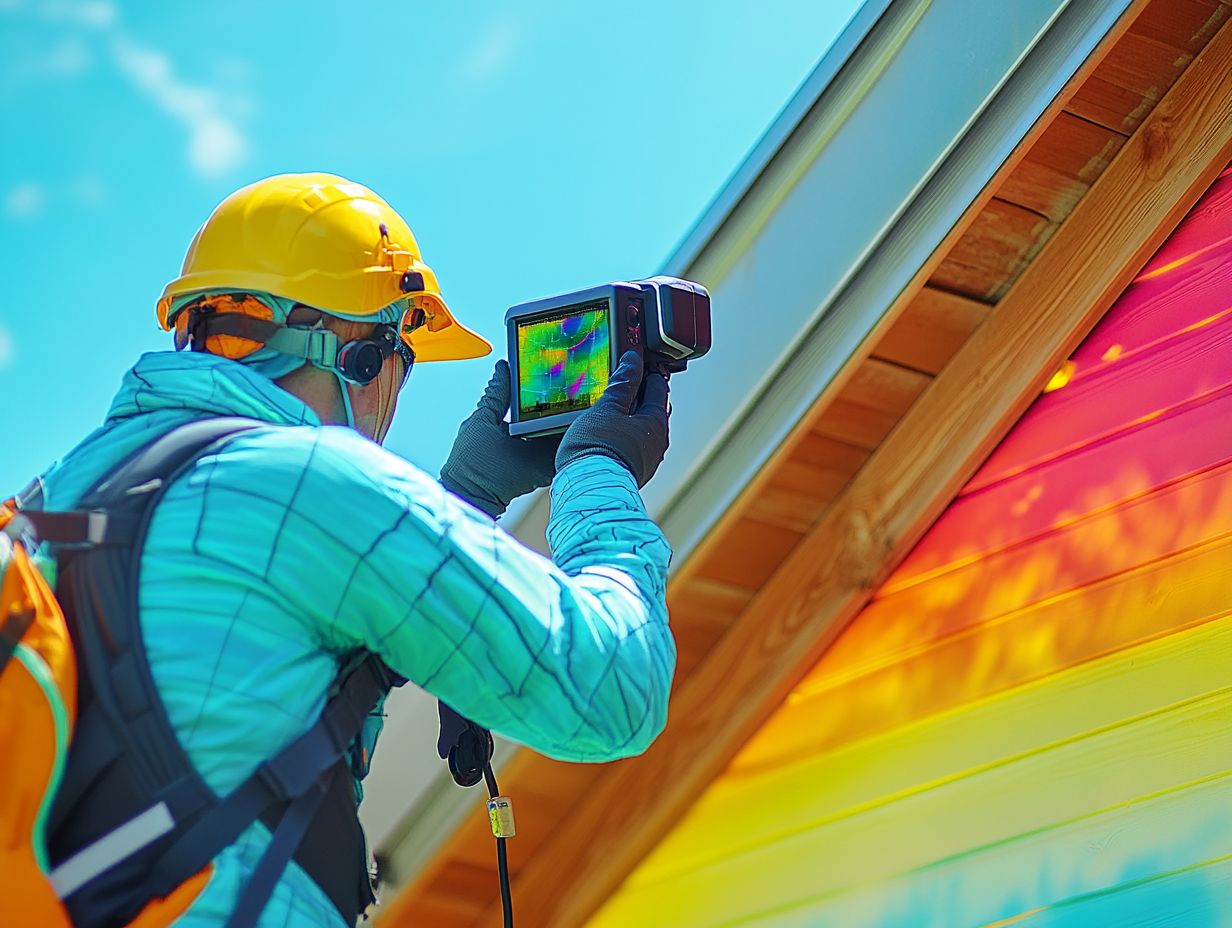
Essential equipment for conducting a thermal imaging inspection includes high-quality infrared cameras and various tools designed to assist in evaluating thermal signatures. You ll want to meticulously plan the techniques employed during the inspection to ensure that every potential problem area is thoroughly examined.
Choosing infrared cameras with advanced features like adjustable emissivity (how well a surface can emit thermal energy) and image enhancement capabilities is crucial. These features enhance the accuracy of your thermal readings. Supplemental tools, such as thermal image analysis software and calibration devices, further refine your evaluation techniques, allowing for a detailed assessment of thermal anomalies.
Proper training in interpreting thermal images can significantly elevate the effectiveness of your inspections. This training enables you to identify issues like heat loss or equipment malfunctions that might otherwise go unnoticed. By maintaining a focus on quality and precision, you will be well-equipped to deliver reliable evaluations and actionable insights.
Choosing a Qualified Thermal Imaging Inspector
Selecting a qualified thermal imaging inspector is paramount for securing a thorough and dependable home inspection.
In areas like Georgia and South Carolina, it s essential to choose certified inspectors who possess the requisite expertise and training. This ensures they can accurately assess thermal signatures and uncover hidden issues within a property, giving you peace of mind in your investment.
Important Considerations
When selecting a qualified thermal imaging inspector, consider several key factors, including their certification, experience, and industry reputation.
A certified inspector should have a proven track record in home inspections. It’s vital to confirm that they have undergone comprehensive training specific to thermal imaging technology. This specialized knowledge significantly enhances their ability to detect underlying issues that may not be immediately apparent.
Experience matters; inspectors with years of hands-on practice often exhibit superior problem-solving skills and an intuitive grasp of building systems. Seeking reviews and testimonials from previous clients can provide valuable insight into the inspector s reliability and professionalism.
Make sure the inspector knows the latest industry standards. This can greatly influence the quality of your inspection results.
Frequently Asked Questions
What is thermal imaging and how is it used in inspections?
Thermal imaging is a technology that uses specialized cameras to detect and measure temperature differences on the surface of objects. It is used in inspections to identify potential issues or defects that might not be visible to the naked eye.
Why is thermal imaging important in inspections?
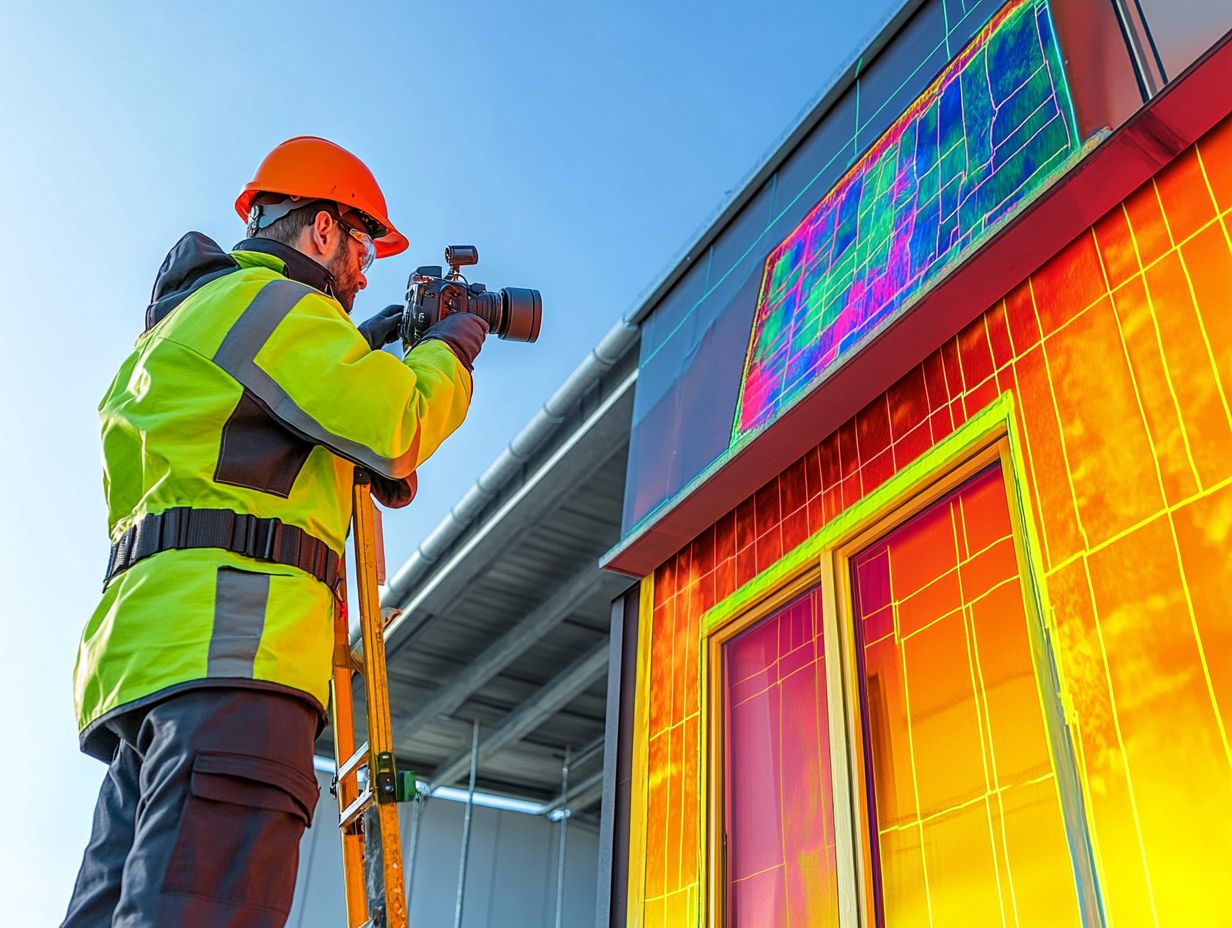
Thermal imaging is important in inspections because it allows inspectors to identify areas of concern that may not be visible through traditional methods. This can help prevent potential safety hazards and costly repairs.
In what types of inspections is thermal imaging commonly used?
Thermal imaging is commonly used in building inspections, electrical inspections, and mechanical inspections. It can also be used in other industries such as energy, aerospace, and automotive.
How does thermal imaging benefit property owners and buyers?
Thermal imaging can benefit property owners and buyers by providing a more accurate and comprehensive assessment of a property’s condition. It can also help identify potential issues that may affect the value or safety of the property.
Are there any limitations to thermal imaging in inspections?
Thermal imaging is a valuable tool, but it has limitations. It only detects surface temperature differences and may miss hidden issues like moisture or mold.
Additionally, proper training is needed to interpret the results accurately.
How can thermal imaging improve the efficiency of inspections?
Thermal imaging improves inspection efficiency by quickly highlighting areas of concern. This approach reduces the need for invasive and time-consuming inspection methods.
By using thermal imaging, property owners and inspectors can save both time and money!
